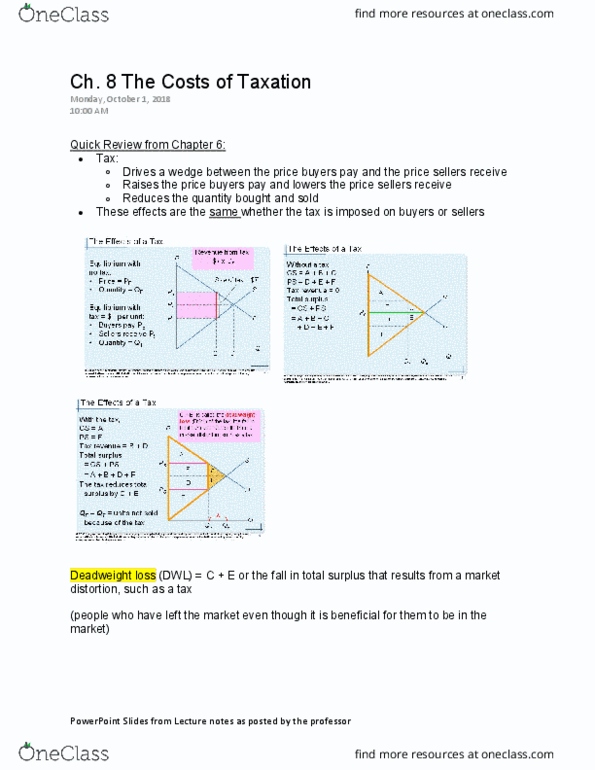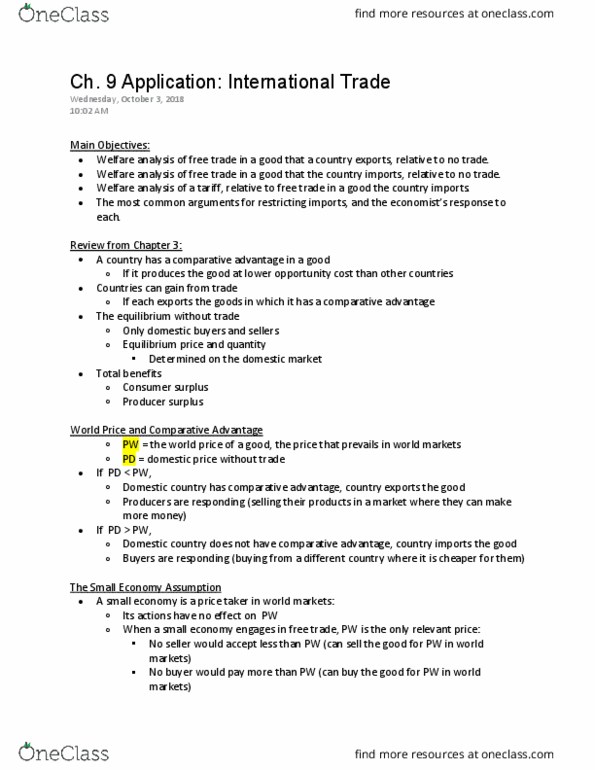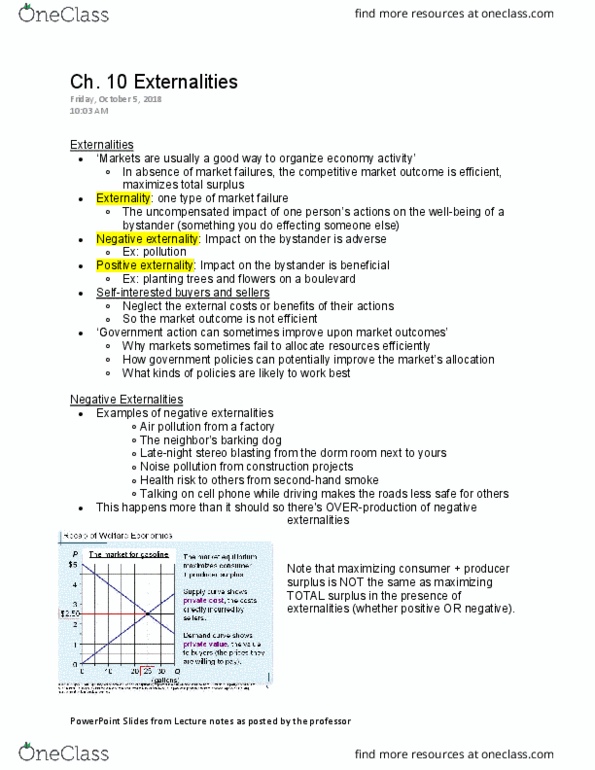ECON 2010 Lecture Notes - Lecture 17: North American Free Trade Agreement, Customs War, General Agreement On Tariffs And Trade
ECON 2010 verified notes
17/47View all
Document Summary
Review from chapter 3: a country has a comparative advantage in a good. If it produces the good at lower opportunity cost than other countries: countries can gain from trade. If each exports the goods in which it has a comparative advantage: the equilibrium without trade, only domestic buyers and sellers, equilibrium price and quantity, determined on the domestic market, total benefits, consumer surplus, producer surplus. World price and comparative advantage: pw = the world price of a good, the price that prevails in world markets, pd = domestic price without trade. If pd < pw: domestic country has comparative advantage, country exports the good, producers are responding (selling their products in a market where they can make more money) If pd > pw: domestic country does not have comparative advantage, country imports the good, buyers are responding (buying from a different country where it is cheaper for them)







